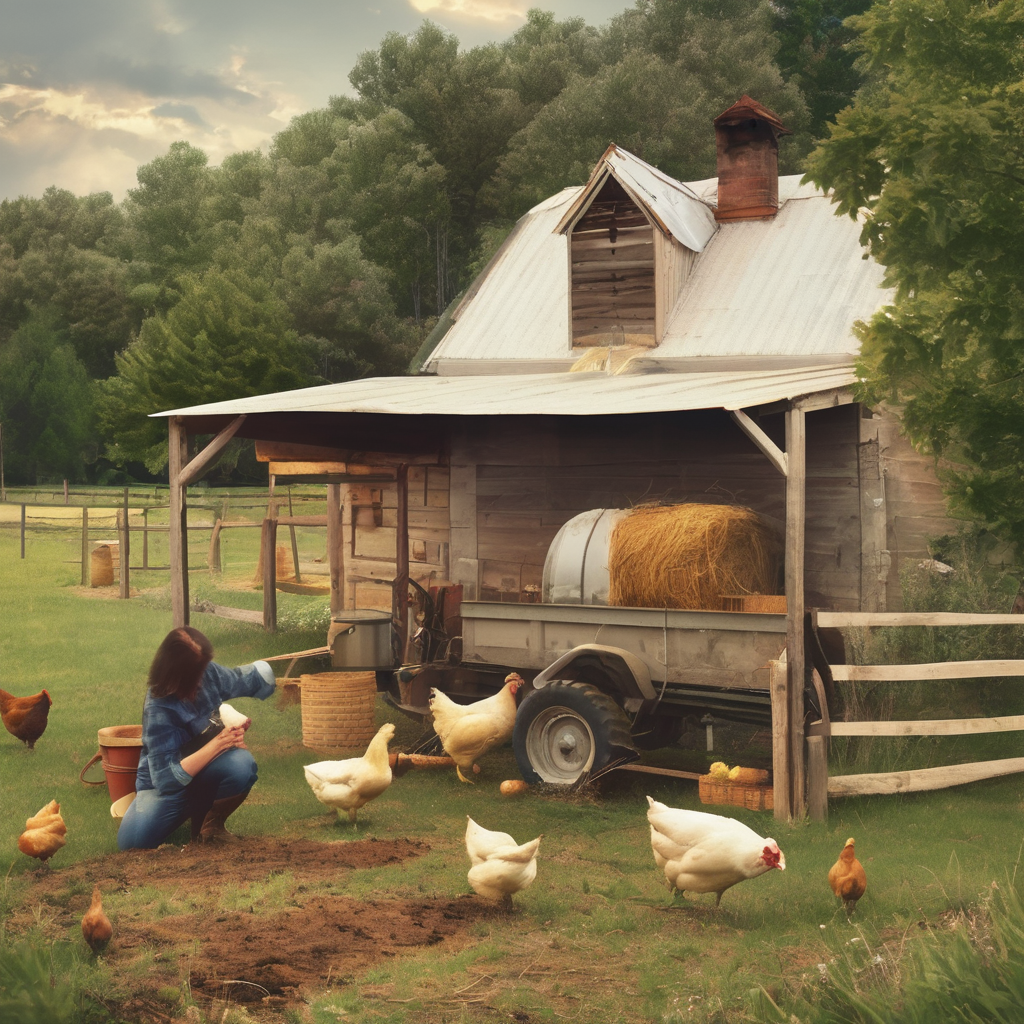Homesteading: The Slow and Steady Path to Self-Sufficiency
Hey there, fellow homesteading enthusiasts! If you’re reading this, chances are you’ve caught the homesteading bug and are dreaming of a life filled with fresh veggies, free-range chickens, and a cozy off-the-grid abode.
But let’s be real: leaping into full-blown homesteading can feel a bit like jumping into the deep end without your floaties. That’s why I’m here to share the beauty of easing into this lifestyle, one small step at a time.
Now, I know what you’re thinking: “But I want to go full homestead mode, like yesterday!” Trust me, I get it. The allure of ditching the 9-to-5 grind and embracing a simpler, more sustainable way of living is strong.
However, as someone who’s been there and done that (and made a few rookie mistakes along the way), I can’t stress enough the importance of taking things slow.
Think of it like training for a marathon—you wouldn’t just lace up your sneakers and go for a 26.2-mile run on day one, would you? Nope, you’d start with a few miles, gradually increasing your distance and building up those endurance muscles. The same principle applies to homesteading.
So, where do you begin? Well, my friends, let’s start with the low-hanging fruit (pun intended). One of the easiest ways to dip your toes into the homesteading waters is by growing your own food.
And I’m not talking about a full-blown farm here; even a few potted herbs on your windowsill or a raised garden bed in your backyard can give you a taste of that fresh, homegrown goodness.
Next up, why not try your hand at preserving some of that delicious bounty? Canning, pickling, and dehydrating are not only incredibly satisfying (there’s something so satisfying about seeing those colorful jars lined up on your shelves), but they’re also practical skills that’ll come in handy when you’re living off the land.
Speaking of practical skills, have you considered learning a few homesteading crafts? Knitting, soap-making, or even basic carpentry can not only provide you with useful items for your future homestead, but they’re also excellent ways to connect with the homesteading community and pick up valuable tips and tricks from the pros.
Now, let’s talk about the furry (or feathery) friends that often come with the homesteading territory. If you’re not quite ready to take on a whole herd of goats or a flock of chickens, why not start small with a couple of backyard hens?
Not only will you be treated to fresh eggs daily, but you’ll also get a taste of the responsibilities (and joys) of caring for livestock.
As you slowly incorporate these homesteading elements into your life, you’ll likely find yourself becoming more attuned to the rhythms of nature and the seasons. You might start paying closer attention to the weather patterns, the phases of the moon, and the changing of the tides—all essential knowledge for a successful homesteader.
And let’s not forget about the financial aspect of homesteading. While the dream is to eventually become self-sufficient and live off the land, it’s wise to ease into it financially as well. Start by cutting back on expenses where you can, paying off debts, and building up a nest egg for your future homestead. Trust me, in the future, you will be grateful for the financial cushion.
Now, I know what you’re thinking: “But what if I get impatient and want to dive in headfirst?” Well, my dear homesteading padawans, that’s where the beauty of taking things slow comes in. By gradually incorporating homesteading elements into your life, you’ll not only gain valuable skills and experience, but you’ll also have the opportunity to figure out what works best for you and your specific situation.
Maybe you’ll discover that you have a knack for beekeeping or that your true passion lies in raising heritage-bred livestock. Or perhaps you’ll realize that a certain aspect of homesteading just isn’t for you, and that’s okay! The beauty of taking it slow is that you can course-correct as needed without having to uproot your entire life.
So, there you have it, my friends—the case for easing into homesteading, one small (but mighty) step at a time. Remember, this journey is about more than just growing your own food or living off the grid; it’s about embracing a simpler, more sustainable way of life that’s in harmony with the natural world around us.
And who knows? Maybe one day, you’ll look back on these baby steps and realize that they were the foundation upon which your dream homestead was built. So, take a deep breath, grab your gardening gloves, and let’s get started on this adventure together, one carrot at a time.

